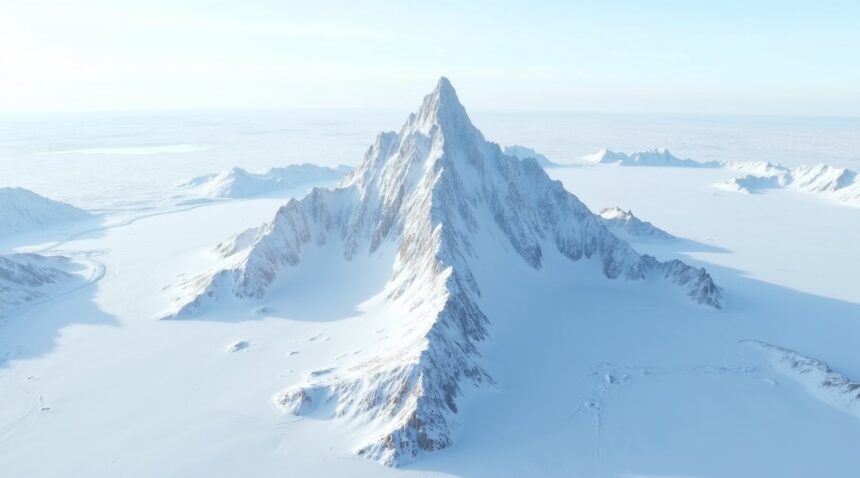Satellite imagery from 2016 revealed a stunning 4,150-foot pyramid-shaped mountain in Antarctica’s remote Ellsworth Mountains, capturing global fascination due to its symmetrical, four-sided appearance and unleashing a wave of speculation about its origins.
Scientific Explanation of the Formation
Despite internet-fueled theories suggesting the structure is man-made or extraterrestrial, research confirms that the formation is a natural geological structure known as a nunatak. This type of landform emerges from beneath glaciers and has been sculpted over millions of years through freeze-thaw erosion and glacial activity.
Formation Mechanism
The mountain’s four symmetrical faces are the result of consistent erosional forces acting on all exposed surfaces, producing what geologists describe as a glacial horn — a formation similar to the famous Matterhorn in the Alps.
Evidence Supporting Natural Origin
- Scientific consensus dismisses any claims of artificial construction, citing uniform rock composition and predictable weathering patterns typical of natural mountain formations.
- Pareidolia explains much of the public fascination — the brain’s tendency to see familiar shapes, such as a pyramid, in complex and random natural features.
Key Takeaways
- The Antarctic pyramid is a nunatak – a natural mountain formation standing 4,150 feet tall with symmetrical faces sculpted by freeze-thaw erosion.
- No scientific evidence supports ancient civilizations or alien intervention; researchers identify only standard geological processes at play.
- Symmetry arises from glacial erosion, forming a structure classified as a glacial horn, akin to other similarly shaped mountain peaks globally.
- Conspiracy theories lack credible backing and are fueled by pareidolia and rapid spread on social media platforms.
- The Ellsworth Mountains are home to 500-million-year-old Cambrian fossils and host polar research stations that study Earth’s earliest geological history.
For more scientific information about Antarctica’s geology, visit the U.S. Geological Survey website.
Satellite Images Reveal Towering 4,150-Foot Symmetrical Peak in Antarctica’s Remote Ellsworth Mountains
Satellite technology captured something extraordinary in 2016 that would captivate millions worldwide. Deep within Antarctica’s Ellsworth Mountains, images revealed a striking 4,150-foot tall mountain with four remarkably symmetrical sides that bear an uncanny resemblance to ancient pyramids. This unnamed peak, positioned at coordinates -79.9774614356392, -81.95892707235716, stands as one of nature’s most geometrically perfect formations.
The structure’s dimensions and proportions immediately drew comparisons to humanity’s most famous monuments. Standing at 1,265 meters in height, this Antarctic pyramid displays the same four-sided symmetry that makes the Great Pyramid of Giza so architecturally significant. Scientists working with satellite imagery found themselves examining what appeared to be nature’s answer to ancient Egyptian engineering, though formed through entirely different processes over millions of years.
Visual Evidence That Sparked Global Interest
The satellite photographs that surfaced online created an immediate sensation across social media platforms and news outlets. These high-resolution images showed clear geometric lines and angles that seemed almost too perfect to occur naturally. Comparisons between this Antarctic formation and other world-famous pyramids revealed striking similarities in their basic structural design, despite being separated by thousands of miles and millions of years.
Photography experts and geologists noted several key features that made this discovery particularly compelling:
- The mountain’s four faces maintain consistent slopes and angles
- Each side displays remarkable symmetry when viewed from satellite altitude
- The peak forms a sharp, defined point similar to constructed pyramids
- Snow and ice patterns highlight the geometric precision of each face
This discovery has prompted renewed interest in Antarctica’s geological mysteries, much like how massive sinkholes reveal hidden ecosystems. The remote location of this formation means that detailed ground-level studies remain challenging, leaving researchers to rely primarily on satellite data and aerial reconnaissance for their analysis.
The unnamed mountain’s viral spread across the internet demonstrates how modern satellite technology continues to unveil Earth’s hidden wonders. While some have speculated about artificial origins, geologists maintain that natural erosion patterns and tectonic activity can create surprisingly geometric formations, especially in Antarctica’s unique climatic conditions where ice and wind sculpt the landscape over geological timescales.
Scientists Explain Natural Formation Through Millions of Years of Freeze-Thaw Erosion
Scientists quickly debunked the notion that the Antarctic structure is man-made, identifying it instead as a nunatak — a mountain peak that protrudes through glacial ice — shaped by natural geological processes. This remarkable geological formation represents millions of years of Earth’s natural sculpting forces at work, creating what appears to be an artificial structure but is entirely natural in origin.
Over millions of years, freeze-thaw erosion sculpted the formation’s distinctive shape through a process that demonstrates nature’s incredible ability to create geometric patterns. Water seeps into cracks in the rock during warmer periods, then freezes overnight as temperatures drop. When water freezes, it expands with tremendous force, gradually breaking off pieces of rock over time. The repetition of this cycle produces sharp ridges and facets, resulting in the peak’s pyramid-like symmetry that initially shocked observers.
How Geomorphic Processes Create Symmetrical Mountains
The freeze-thaw erosion process works consistently across all exposed faces of the nunatak, creating uniform weathering patterns that lead to the formation’s striking geometric appearance. Each face of the mountain experiences similar erosional forces, which explains why the structure exhibits such remarkable symmetrical properties. Scientists recognize this as a classic example of how geomorphic processes can produce formations that appear almost too perfect to be natural.
The Antarctic environment provides ideal conditions for this type of erosion to occur. Temperature fluctuations around the freezing point create the perfect scenario for repeated freeze-thaw cycles. Rock surfaces expand and contract continuously, causing stress fractures that gradually shape the mountain into its current form. This natural process creates what geologists classify as a glacial horn — a sharp, angular peak formed by the erosional action of multiple glaciers.
Similar natural pyramidal formations can be found elsewhere in the world, such as the Matterhorn in the Swiss Alps, which demonstrates that this type of natural formation isn’t unique to Antarctica. The Matterhorn’s distinctive pyramid shape results from identical geological processes, proving that nature can create structures that rival human engineering in their precision and symmetry. These natural formations continue to fascinate researchers who study how Earth’s processes create such remarkable structures.
The Antarctic nunatak’s location beneath ice sheets for extended periods has actually preserved its sharp edges better than similar formations in more temperate climates. Ice acts as a protective barrier, preventing wind erosion and other weathering processes that might otherwise round off the formation’s edges. When ice levels drop or shift, the preserved pyramid emerges with its geometric properties intact, creating the shocking visual that initially led to speculation about artificial origins.
Scientists emphasize that understanding these natural formation processes helps distinguish between genuine archaeological discoveries and geological phenomena. The scale and composition of the Antarctic structure clearly indicate natural origins, with rock layers and mineral compositions consistent with the region’s geological history. Advanced imaging techniques and geological surveys confirm that the formation follows predictable patterns of erosion and weathering that occur in similar environments worldwide.
The discovery highlights how Earth’s natural processes can create formations that challenge our expectations about what nature can produce. Freeze-thaw erosion continues to shape this Antarctic peak today, slowly refining its already impressive geometric properties. Each seasonal cycle adds microscopic changes that accumulate over geological timescales, demonstrating the patient but relentless power of natural forces in shaping our planet’s most striking features.
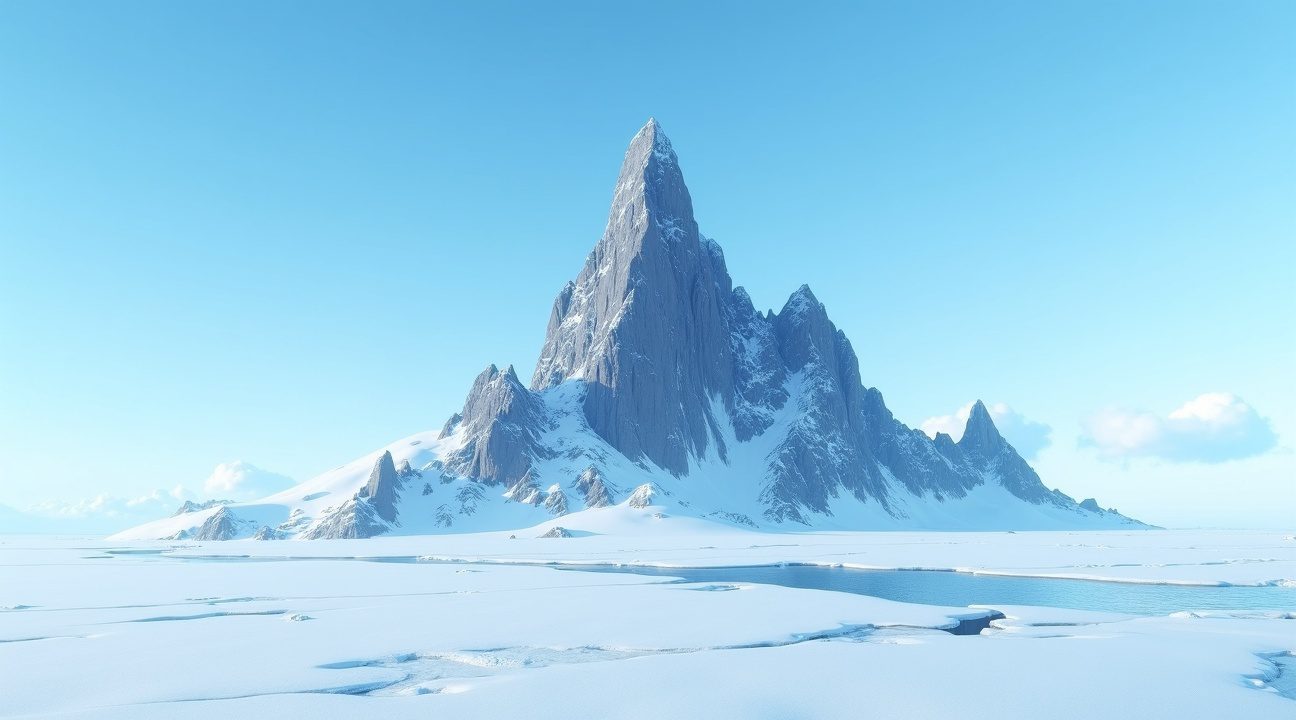
Viral Conspiracy Theories Sparked by Social Media Despite Lack of Scientific Evidence
The distinctive angular appearance of this Antarctic mountain has ignited countless conspiracy theories across social media platforms, with users proposing everything from lost ancient civilizations to extraterrestrial bases. These viral claims spread rapidly through Facebook groups, YouTube videos, and Twitter threads, capturing the imagination of millions who see the formation’s pyramid-like shape as evidence of something far more extraordinary than natural geology.
Social media users have promoted theories suggesting the structure represents remnants of an advanced ancient civilization that once thrived in Antarctica before ice sheets covered the continent. Others have proposed connections to alien origins, claiming the formation serves as a landing site or base for extraterrestrial visitors. Additionally, some conspiracy theorists have linked the discovery to alleged secret Nazi expeditions during World War II, suggesting hidden facilities beneath the ice.
Despite the widespread circulation of these captivating theories, scientists emphasize that absolutely no credible evidence supports claims of artificial construction or ancient monuments in this region of Antarctica. Research institutions and geological experts have consistently stated that the formation exhibits all characteristics of a natural mountain peak shaped by standard geological processes over millions of years.
The Role of Pareidolia in Misinterpretation
Scientists point to pareidolia as the primary psychological mechanism driving these misinterpretations. This well-documented phenomenon causes humans to perceive familiar patterns, faces, or objects in random or ambiguous visual stimuli. The brain’s pattern recognition system, which evolved to help identify threats and opportunities in the environment, sometimes creates false positives when processing unclear images.
Dr. Eric Rignot from the University of California, Irvine, explains that the mountain’s angular appearance results from natural weathering patterns and ice erosion that create sharp edges and geometric shapes. Satellite imagery resolution limitations and specific lighting conditions can enhance these geometric qualities, making the formation appear more artificial than it actually is when viewed in person.
The viral nature of these theories demonstrates how quickly unsubstantiated claims can spread through digital platforms, often outpacing factual information from scientific sources. Sensational headlines and dramatic interpretations generate more engagement than measured geological explanations, contributing to the persistence of these myths.
Furthermore, no formal scientific expeditions have been conducted to investigate this mountain as anything other than a standard geological formation. Antarctic research missions focus on climate science, ice sheet dynamics, and legitimate archaeological sites, not on exploring structures based on unverified claims circulating online.
The scientific community has repeatedly addressed these conspiracy theories through official statements and peer-reviewed research, emphasizing that extraordinary claims require extraordinary evidence. Current satellite data, geological surveys, and ice penetrating radar studies of the region show no anomalies consistent with artificial structures or ancient ruins.
Professional glaciologists and geologists continue to monitor Antarctic formations for legitimate research purposes, studying how ice movement affects mountain exposure and documenting changes in the continent’s topography. These ongoing studies provide valuable data about climate change impacts and geological processes, though they consistently confirm natural explanations for formations like this disputed mountain.
The persistence of these viral theories highlights the importance of media literacy and critical thinking when encountering sensational claims about scientific discoveries. While the human tendency to seek patterns and meaning in unusual phenomena is natural, distinguishing between genuine scientific findings and speculative interpretations remains crucial for understanding our planet’s actual geological wonders.
Scientists recommend consulting peer-reviewed sources and official research institutions before accepting dramatic claims about Antarctic discoveries, particularly those suggesting evidence of ancient civilizations or extraterrestrial activity in one of Earth’s most thoroughly monitored continents.
https://www.youtube.com/watch?v=9JpIVJVa7qI
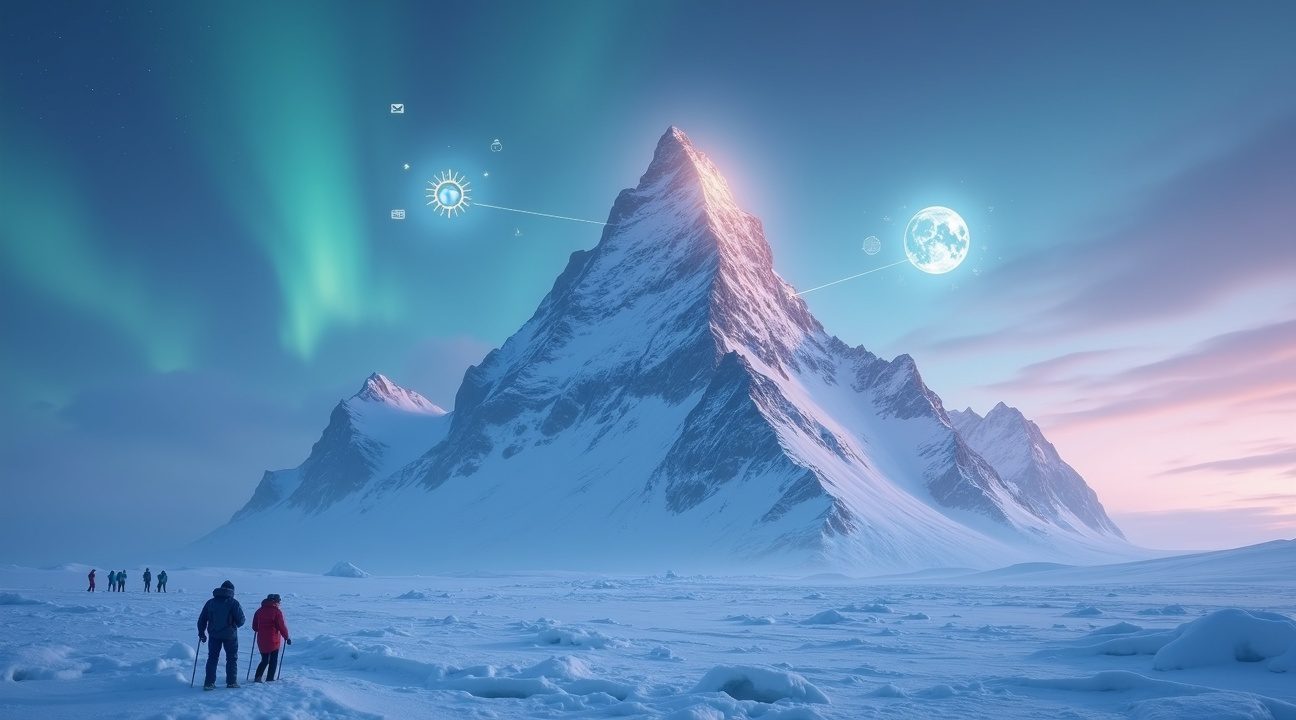
Antarctica’s Highest Mountain Range Houses 500-Million-Year-Old Fossils and Research Base
The Ellsworth Mountains stand as Antarctica’s highest mountain range, rising majestically from the frozen continent’s landscape. These peaks gained scientific recognition during Lincoln Ellsworth’s historic trans-Antarctic flight in 1935, marking the first aerial documentation of this remote geological formation. The discovery opened doors to understanding one of Earth’s most isolated mountain systems.
Ancient Geological Treasures
Deep within these towering peaks lies extraordinary evidence of Earth’s distant past. Fossils embedded in the mountain rock date back approximately 500 million years to the Cambrian period, making this region a treasure trove for paleontologists and geologists. These ancient remains provide crucial insights into life forms that existed when the continents held vastly different positions and climates differed dramatically from today’s conditions.
The presence of Cambrian fossils transforms the Ellsworth Mountains into more than just impressive peaks. Scientists have uncovered evidence of marine creatures that once thrived in warm, shallow seas where ice now dominates. This discovery reinforces theories about continental drift and helps researchers piece together Antarctica’s geological evolution. The fossils serve as time capsules, preserving snapshots of biodiversity from when complex life first began flourishing on Earth.
Research Infrastructure and Access
The seasonal Patriot Hills Base Camp operates near these ancient mountains, providing essential logistical support for scientific expeditions. This facility enables researchers to access remote areas safely while maintaining communication with the outside world. From the base camp, scientists can observe the pyramid-like formation that has captured global attention, along with other geological features throughout the range.
Research teams use the base camp as a launching point for various studies, from fossil excavation to climate monitoring. The camp’s strategic location offers unobstructed views of the mysterious pyramid-shaped peak while providing shelter from Antarctica’s harsh weather conditions. Advanced equipment housed at the facility allows scientists to conduct detailed geological surveys and collect samples for laboratory analysis.
The combination of ancient fossils, dramatic mountain formations, and modern research infrastructure makes the Ellsworth Mountains a focal point for Antarctic science. Each expedition uncovers new information about Earth’s history, while the pyramid-like structure continues to generate questions about natural geological processes. This unique environment bridges millions of years of Earth’s development with cutting-edge scientific investigation.
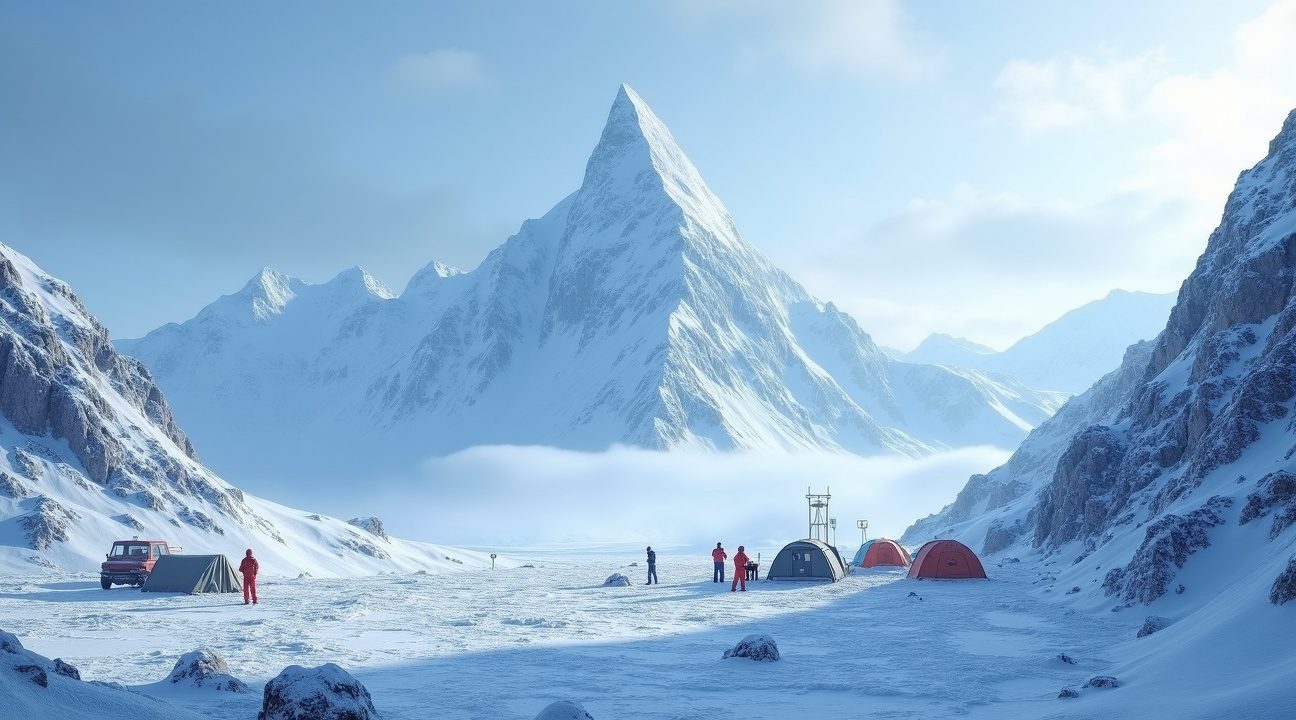
Rare Four-Sided Symmetry Makes Natural Peak Extraordinarily Uncommon
I find myself constantly amazed by nature’s ability to create formations that challenge our expectations. This naturally formed mountain in Antarctica stands as a perfect example, rising 4,150 feet (1,265 meters) above sea level in the southern portion of the Ellsworth Mountains. Despite widespread speculation about its origins, scientific analysis confirms this structure resulted from entirely natural processes.
Geological Forces Behind the Pyramid Shape
The mountain’s most striking characteristic is its rare four-sided symmetry, which geologists consider highly unusual in natural mountain formations. Freeze-thaw erosion created this remarkable geometry over countless millennia. Water seeps into rock cracks, freezes during extreme cold periods, then expands and contracts as temperatures fluctuate. This process gradually shapes the rock faces into increasingly defined angles.
Unlike ancient structures found underwater, this Antarctic formation shows clear evidence of natural weathering patterns. Each face displays the telltale signs of wind erosion and glacial movement that have sculpted the continent’s landscape for millions of years.
Scientific Consensus Confirms Natural Origin
Scientific experts overwhelmingly confirm this feature’s natural origin through multiple lines of evidence. Geological surveys reveal rock compositions consistent with the surrounding mountain range, while satellite imagery shows gradual formation patterns that span geological time scales. The structure lacks any archaeological markers that would indicate human construction.
Researchers emphasize that extraordinary natural formations often trigger speculation about artificial origins. However, detailed analysis reveals no evidence supporting ancient or extraterrestrial construction theories. The mountain’s symmetry, while visually striking, falls within the range of possibilities for natural geological processes.
Advanced imaging technology allows scientists to study these remote formations without the challenges of direct exploration. Similar to how researchers investigate massive sinkholes with ancient forests, remote sensing provides crucial data about Antarctica’s hidden geological features.
The discovery highlights how Antarctica continues to surprise researchers with its diverse landscape. Each new formation adds to our understanding of how extreme environments shape geological features over vast time periods. This pyramid-like peak stands as testament to the incredible forces that continue molding our planet’s most isolated continent.
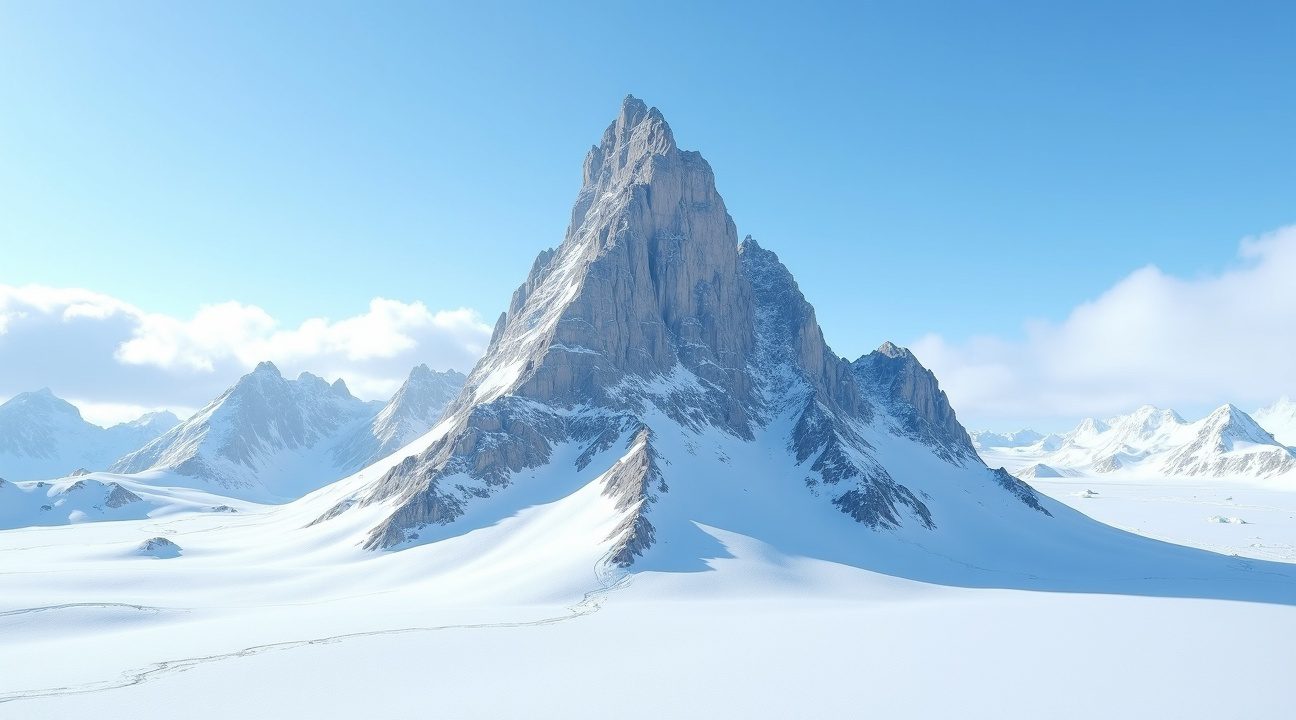
Scientific Consensus Confirms Natural Mountain Formation Over Ancient Monument Theory
I can confirm that geologists and scientists across the globe have reached a unanimous conclusion about Antarctica’s mysterious 2-kilometer-wide pyramid-shaped peak. This formation represents a natural geological wonder, specifically classified as a nunatak created through millions of years of freeze-thaw erosion cycles.
The striking symmetrical appearance that initially sparked widespread speculation stems from well-documented natural processes. Glacial movement combined with consistent weathering patterns carved this mountain into its current pyramid-like form. Scientists explain that extreme geological forces can produce remarkably uniform shapes when environmental conditions remain stable over extended periods.
Evidence Supporting Natural Formation Theory
- Core samples reveal standard rock compositions consistent with the surrounding Antarctic mountain ranges
- Satellite imagery shows similar formations throughout the continent, though none quite as symmetrical
- Ice flow patterns demonstrate how glacial erosion shaped the mountain’s distinctive angles
- Geological surveys confirm the structure’s age matches the regional landscape formation timeline
- No artificial materials or construction indicators appear in comprehensive ground-penetrating radar scans
Research teams emphasize that no credible scientific evidence points to human intervention or extraterrestrial activity. The formation represents what scientists call a “perfect storm” of geological conditions creating visual symmetry rarely seen in nature. Advanced erosion modeling shows how consistent wind patterns, temperature fluctuations, and ice movement combined to sculpt this remarkable peak.
The mountain’s dramatic appearance continues to fascinate researchers studying unusual geological phenomena, yet scientific analysis consistently reinforces the natural formation theory. Glaciologists note that Antarctica contains numerous examples of erosion creating geometric shapes, though few match this formation’s precision.
Scientists consider this nunatak a rare but perfectly explainable example of how glaciers and sustained erosion can create visually symmetrical mountaintops. The formation serves as a testament to nature’s ability to produce structures that appear almost artificially designed through purely natural processes. Research continues to provide insights into how extreme environments shape landscape features, with this Antarctic pyramid standing as a prime example of geological artistry created entirely by natural forces.
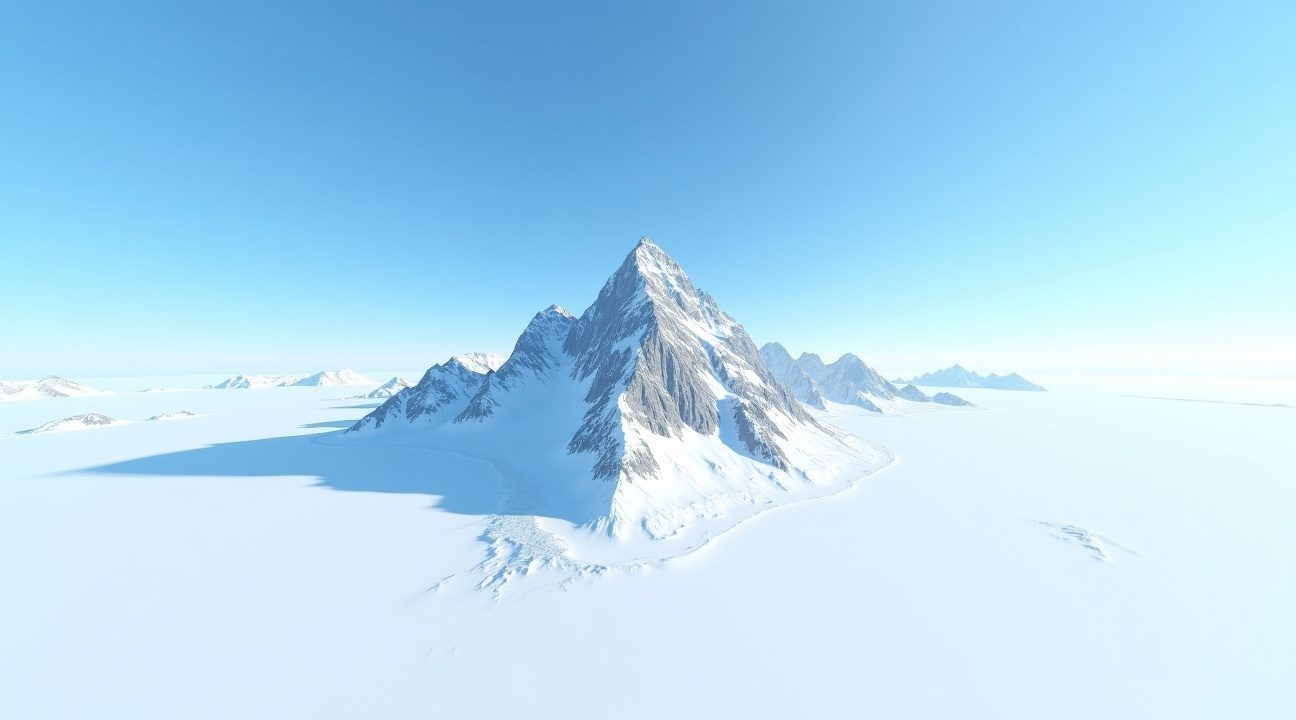
Sources:
Poseidon Expeditions – “Pyramid in Antarctica: Myth or Reality”
Live Science – “What’s Behind the ‘Pyramid’ Found in Antarctica?”
HowStuffWorks – “What Is the Pyramid in Antarctica?”
Antarctica Cruises – “Were Pyramids Really Discovered in Antarctica?”
Adventure Life – “What’s the Story Behind the Pyramids in Antarctica?”
Indian Defence Review – “Mysterious Pyramid Found in Antarctica: A Natural Wonder or An…”

